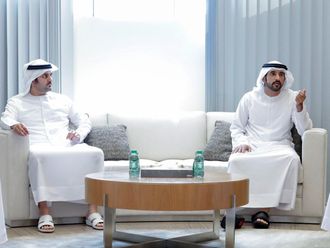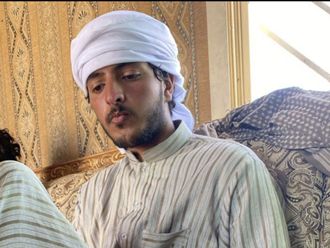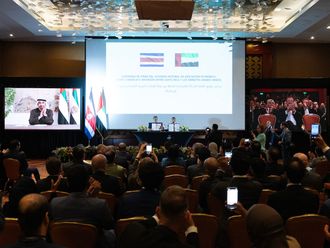Dubai: Dubai Bypass Road has been renamed Emirates Road under the directive of His Highness Shaikh Mohammad Bin Rashid Al Maktoum, Vice-President and Prime Minister of the UAE and Ruler of Dubai.
Emirates Road is a key traffic corridor in the UAE’s road network and offers an alternative route to Shaikh Zayed Road and Shaikh Mohammad Bin Zayed Road as it provides an external corridor for motorists travelling from Ras Al Khaimah, Umm Al Quwain, Ajman and Sharjah to Abu Dhabi and vice-versa without having to go through the downtown area, thus reducing traffic congestion on internal roads.
The road will gain in importance given the massive urban expansion developments stretching 120 kilometres (72km of the stretch in Dubai) on both sides.
Built to international best engineering specifications and standards, the road has six lanes in each direction in the stretch that lies within Dubai and three to four lanes in the section that passes through other emirates.
In 2007, the Dubai Roads and Transport Authority (RTA) invested Dh1.15 billion to expand the road from two lanes to six lanes. It also has 15 interchanges and 12 tunnels.
With a speed limit of 120km/h, the highway was constructed in four phases. RTA’s future plan envisages routes between Emirates Road and Shaikh Zayed and Shaikh Mohammad Bin Zayed roads.
The RTA’s keenness on completing the huge project has led to dividing it into four phases. The first and second phases will entail widening Emirates Road from the Dubai-Sharjah border at the intersection of Al Sajaa- Khawaneej towards Dubai- Al Ain road at the Ruwaiyah intersection covering 23 kilometres.
The expansion works also include adding two lanes to the already existing six lanes in each direction apart from developing the intersection with Al Aweer Road from a roundabout to an interchange.
The third phase covers the Dubai-Al Ain Road at the Ruwaiyah intersection towards Jebel Ali-Al Habab Road covering 24 kilometres. This phase includes the establishment of a freeway with six lanes in both directions and developing the Ruwaiyah interchange while building the Al Qudra Bridge and 4 U-turn tunnels for vehicles.
The fourth and last phase extends from Jebel Ali-Al Habab Road at the Al Qaim roundabout to the Dubai-Abu Dhabi border at the intersection with the Al Fayyah road for trucks which is 25 kilometres long. The project also includes a six-lane freeway in both directions and three U-turn tunnels for vehicles.












